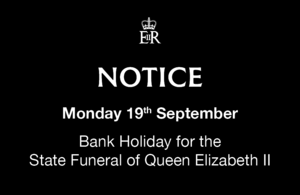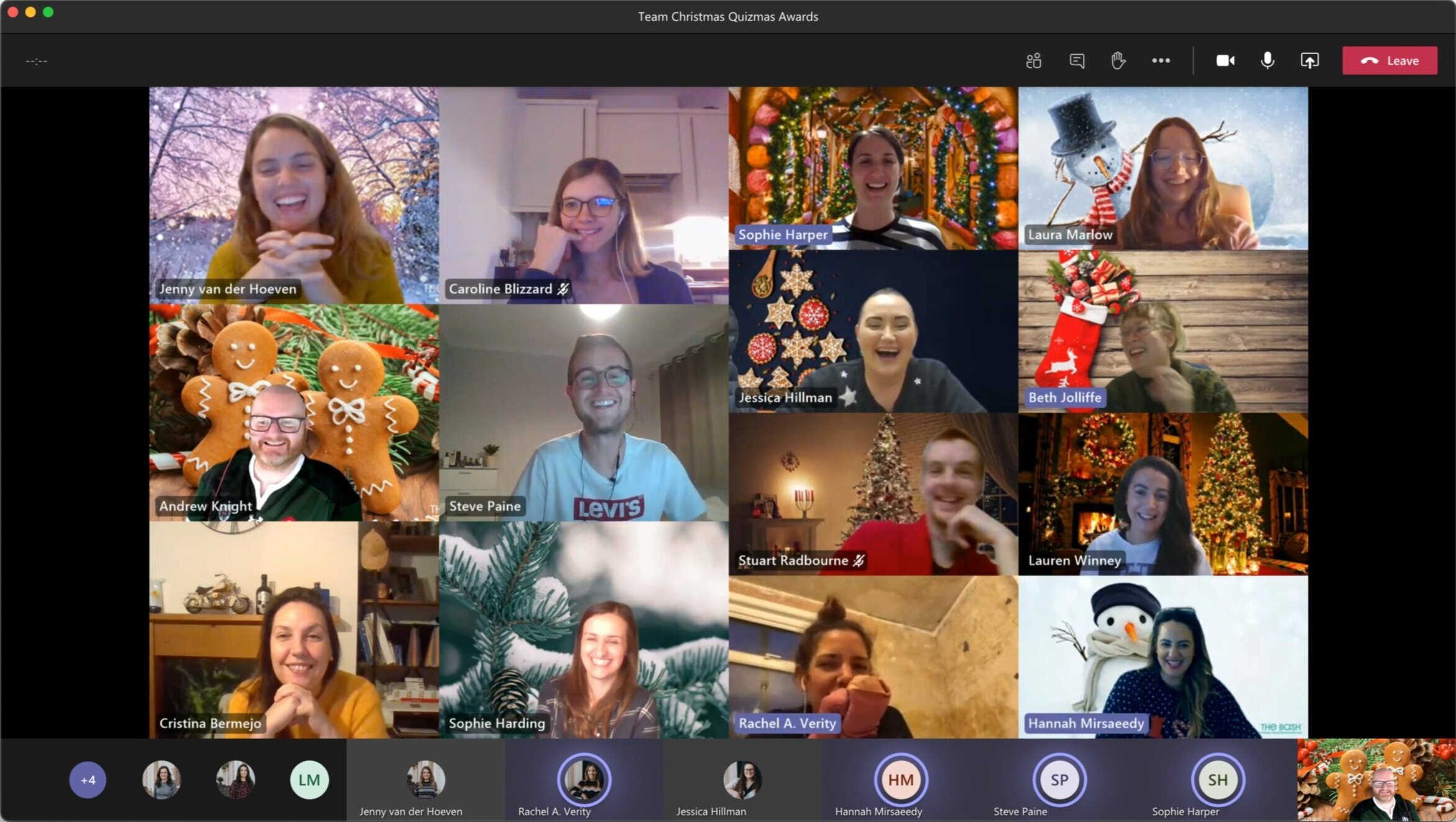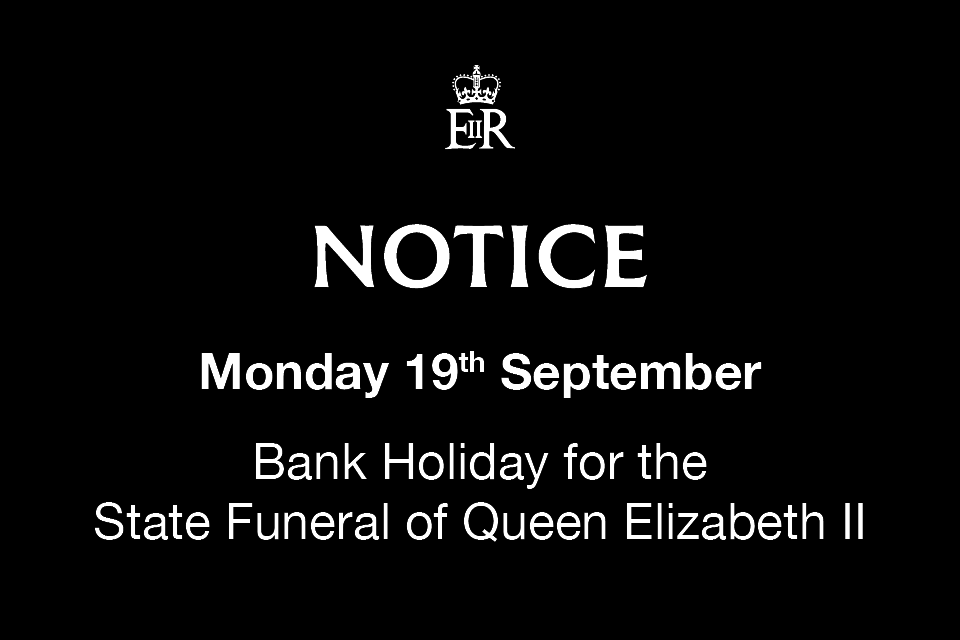Is there ever a ‘good way’ to tell people they no longer have a job? Well, Twitter and Stripe have recently had to grapple with this challenge, with other companies, such as Meta, following swiftly behind.
How leaders respond and communicate in difficult times is key to the health and wellbeing of both their people, and their business. Many companies have often already publicly declared how they want to talk to people, through proudly displayed value statements on their websites.
Blowing your own trumpet on what matters to your business is great, but it must be real. Have a little read of how important Twitter thinks healthy conversation is. In summary … ‘should be able to speak your mind’ … ‘find credible information easily’ …’want you to be part of the conversation’ … ‘you should feel safe.' Then consider the chaotic communication around the severance of potentially 7,500 Twitter staff over the past few weeks. This story has been delivered to the public domain through knee-jerk tweets from company leaders, complemented by tales of exceptionally poor treatment shared by disgruntled (and who can blame them) former employees.
Twitter slashed nearly half of its workforce without any warning or formal process
In stark contrast, financial infrastructure internet startup Stripe, issued a bold press statement, publicly explaining how and why they would be laying off 14% of their workforce. In a message that was slick beyond belief, the leadership team explained clearly what they were doing, and took full responsibility for mistakes that had been made. Their brand values? Well, they include: ‘move with urgency and focus’, ‘think rigorously’ and ‘optimism’. Their statement about staff lay-offs, is a perfect ode to their brand values. This is a crucial lesson for all leaders.
Create strong values, that you can really live by. Make them the foundation for your business and you will have a unshakeable confidence that will help to guide you through the tough times. This nugget, is the first of our essential lessons for leaders on laying people off with decency and integrity …
Stripe cut 14% of its staff and released one of the best statements I've ever seen
Always follow your internal procedures and comply with employment law
Above all, leaders must take note of the clear legislation and guidance from ACAS to guide employers who are considering making redundancies. If you’re not sure which process and procedure to follow, or which legislation applies to your changes, talk to your HR Business Partner or give us a call.
Ending people’s employment is one the hardest things you must do as a leader. We have lots of experience in supporting organisations to make difficult decisions with compassion and confidence. If you could benefit from the advice of an experienced specialist, then please, get in touch.
Twitter & Stripe: Do They Practise What They Preach?



Live your values – more so during challenging times

Lay-off and redundancy procedures should, as a minimum, be legally compliant

Word will get out – manage the message

Remember the people left behind – support them

Put a recovery plan in place

Final thought
I need HR support to restructure my team
Category: Employment Issues
Cost of Living Crisis: What’s a CEO to do?
Many businesses are now under extreme financial pressure, as the price of energy bills, goods and services continues to rocket. But that’s not all CEOs are worrying about, in addition most decent bosses will also be deeply concerned about how their people will survive the coming months.

CEOs are grappling with current cost of living crisis and how the aftershocks of the pandemic effect their operations. But you can’t separate the prosperity of a business from the prosperity of the workforce.
There is now a growing, immediate need to make sure people have food, warmth and shelter.
How shocking is it to read that several NHS Trusts have already set up food banks or launched food voucher schemes to support their staff?
As well as being an all-round total sh*tshow for running a business and a household, the UK cost of living crisis inevitably blurs the boundaries between home and work ‘problems’. The burden of everything being too expensive, weighing heavily on personal lives, work lives and mental health.
Leaders now recognise that the cost of living is affecting people at work

How will work life be impacted by the cost of living crisis?
There’s no arguing that life feels uncertain, and the economic outlook is unclear. We don’t know how work will be affected by the cost of living crisis, and many business leaders are still trying to work out what to do for their customers and team members.
If you understand what’s likely to happen in your business, it will help you design the right support for your team…
Shift in balance of home / office working
- As people choose between the cost of travelling to work vs heating their homes, and keeping money aside for other essentials, we’re likely to see a shift in the balance between the number of home working days and going on to site.
- Is it more expensive to stay at home and work or travel to site to work?
Key workers will suffer disproportionately
- The disparity between those who benefit from home/remote working and those who must come into work is likely to widen.
- At the time of writing, it seems that fuel prices have dropped slightly but they’re unlikely to come back down to the heady days of £1.50 per litre.
- This disproportionately impacts certain sectors: the emergency services, shops, factories, health worker, refuse collectors, schools … the very people we depended on during the pandemic.
Many working people with modest salaries will be in fuel poverty
- Although the Energy Price Guarantee has been introduced, the cost of home energy has more than doubled in the past 18 months.
- The End Fuel Poverty Coalition estimates that the number of households across the UK in *fuel poverty from 1 October 2022 will be 7 million, this could rise to 7.8 million from early 2023.
- If you have people in minimum pay roles in your business, it’s quite possible that they will be in fuel poverty.
Our pandemic 'heroes' are going to suffer disproportionately vs. everyone else

What can CEOs do right now to support employees through the cost of living crisis?
- Many companies are now offering one off ‘cost of living’ payments, which come with their own challenges.
- Bit of a no sh*t Sherlock one this … but prevention is better than cure – make sure you pay people at least a living wage.
- No, not the National Living Wage but the Actual Living Wage as measured by the Living Wage Foundation.
- If you’re not sure you can afford a living wage, there may be ways you can make your business more efficient and unleash potential to achieve more, or create headroom for better wages.
If you’ve made more than you thought, share it!
- If you’ve made greater profits than forecast, consider passing on some of those earnings to your team, as soon as possible.
- It goes without saying that your people are your greatest asset and should share in the company’s successes.
Don’t pay for employee benefits that nobody uses
- Stop funding ‘ghost’ benefits and reinvest that money.
- Whether you’re due to review your employee benefits or not, now is the perfect time to look at the flexible/opt-in benefits that you offer and understand if they’re being used or not.
- Things like perks websites, opt-in discount schemes, employee health cash plans, all cost money. If they’re not making a difference, get rid and use the money in a different way.
Satisfaction with pay, reward and benefits is constantly changing – you have to keep pace with the market!
“Individuals’ preference and satisfaction levels in relation to reward are dynamic, not fixed. External events, for example a recession, can affect individuals’ confidence, altering their satisfaction with current reward offers.”
— CIPD 2015, Show me the money, the behavioural science of reward
Make sure everyone knows if help is already available
- If you have an Employee Assistance Programme (EAP) it may well offer 24/7 access to wellbeing, financial and legal advice.
- This means employees and workers (including board members and volunteers) can go to someone independent if they’re struggling.
- If you’ve got this benefit shout about it!
- Make sure everyone* that’s eligible knows about it. (*Some EAP providers have a minimum earning level/working hours in the contract so check first.)
Plan for more people coming ‘in’ rather than working at home
- Facilities, HR and Operations teams should prepare now for greater workspace usage over the winter.
- Remember: you should have plans in place to comply with any change in COVID-19 public health measures alongside a greater desire to come into the office (if possible).
Proactively talk to your team about the support available to them

What should CEOs do in the medium term to help employees survive inflation?
Just yesterday, the Office for National Statistics (ONS) announced that the main measure of inflation, the Consumer Prices Index (CPI) was 11.1% in October 2022, up 10.1% in September 2022.
CPI is at an eye-watering figure and it’s not something you can control, so what can you do?
Pay your team fairly
- Many companies are now offering one-off ‘cost of living’ payments, which come with their own challenges.
- Bit of a no sh*t Sherlock one this … but prevention is better than cure – make sure you pay people at least a living wage.
- No, not the National Living Wage but the Actual Living Wage as measured by the Living Wage Foundation.
- If you’re not sure you can afford a living wage, there may be ways you can make your business more efficient and unleash potential to achieve more, or create headroom for better wages.
Bring in independent advisors to help people
- Financial wellbeing and education is something most employers don’t know they can provide for their teams.
- We’ve seen plenty of examples of organisations working with independent advisors and coaches to help their teams manage their money well and deal with any debt issues that might also be crippling their household budgets.
Creative thinking around the affordability of travelling to work
- Travel allowances have fallen out of fashion, but it might be time to reconsider, perhaps refocusing on public transport rather than vehicle allowances.
- If you’re not able to offer a travel allowance, you might want to consider an interest-free season ticket loan that colleagues can access via payroll.
- You’re not actually paying for the season ticket; however, you’re helping your colleagues to avoid a crippling season ticket payment and reduce the cost of coming to work.
- If lots of people drive, consider a carshare scheme.
- You could also introduce a cycle to work scheme, which would help support health and wellbeing as well as being a travel solution.
Help people charge their cars for free
- Add EV charging/parking points to your company properties/car parks.
- This won’t help everyone but as EVs become more popular, it’s another way to help your team and encourage others to switch away from petrol/diesel.
- If you have solar panels on your buildings, use the energy to feed the EV charging points FOR FREE for your colleagues and visitors. (If you’re in Wales/South West we can recommend some reliable contractors to do this work for you – get in touch)

How can CEOs insulate their staff against future financial hardships?
In addition to the short and medium-term options we’ve discussed in this article, there are opportunities for leaders to help insulate employees against future financial hardship.
Here’s some ‘slow-burn’ options that are likely to help with the family finances, and increase engagement, loyalty, productivity and performance.
Performance-related pay scheme
- Consider how you can share profits through a performance-related pay scheme.
- Maybe even consider how an employee ownership model might work for you?
- There is no ‘one size fits all’ approach here and in some sectors, this wouldn’t be right, e.g. use of public money, however it’s worth looking at if it’s an option that’s appropriate for you.
Shadow equity schemes
- If performance-related pay isn’t right for your business, you might want to consider a shadow equity scheme (good for VCs and those looking to retain key talent, grow and sell within 3-5 years).
- A great way to share the benefits of a business sale with your team.
Long term incentives plans (LTIP) for executives
- These tend to work better for businesses and executives alike, rewarding long term performance and productivity instead of short-term results.
- In the context of a cost of living crisis LTIPs incentivise executives to make decisions that retain talent and ensure a good customer experience, meaning executives are less likely to make short-term decisions to save a few quid at the expense of long-term performance.
Don’t know where to start when it comes to supporting your team through the Cost of Living Crisis?
We are passionate about finding ways to help bosses do the best they can to look after their people.
Some of what we’ve outlined here is simple, but implementing activity that’s targeted to help those that need it most often gets businesses in a pickle. Primarily because they get bogged down about treating all employees the same.
If you need help to work how to support those that need it in a way that’s fair and legal, then please drop us a line. We’d be happy to talk to you.
HR myths busted: “Cost of living support – all staff, must be treated the same”
Doing the same for everyone means you are treating people equally. But your people are not all in the same position. Treating people fairly means that you do the right thing for that person, so you are meeting their individual needs. Giving everyone the same may feel fair, but it isn’t.

The cost of living crisis will not impact all your people equally. Higher earners will be better insulated to survive. How do you, as a CEO, implement support that helps the people that need it, without ostracising the people that don’t?

What is the difference between treating people equally and treating people fairly?
Doing the same for everyone means you are treating people equally. But your people are not all in the same position. Treating people fairly means that you do the right thing for that person, so you are meeting their individual needs. Giving everyone the same may feel fair, but it isn’t.
Equal treatment (i.e. the same) doesn't always produce an equitable outcome
One off payments may benefit higher paid staff more than lower paid colleagues
- There’s been a lot of publicity about one-off ‘cost of living payments’. Barclays, Co-operative Bank, Sky, Nationwide, Virgin Money, NatWest and HSBC are amongst many big brands that have decided to pursue this path.
- We urge you to think carefully before paying staff bonuses or making ‘cost of living’ payments.
- When you calculate a % of salary, or a cash lump sum remember that some formulas benefit higher-paid staff more than lower-paid staff. This defeats the object of financial support. Same goes for staff who earn commission and are on a relatively low-base pay, will you look at total earnings?

One off payments may increase your gender pay gap
If you’ve got a gender pay gap (and you probably have) and/or an ethnicity pay gap (which you also probably have and may not even measure) take care not to increase inequality through your actions.
Don’t assume low use of an existing benefit means it’s not valuable

You may inadvertently create a wider gender and ethnicity pay gap
If you’ve got a gender pay gap (and you probably have) and/or an ethnicity pay gap (which you also probably have and may not even measure) take care not to increase inequality through your actions
Not every benefit needs to have majority use to be valuable. Removing a low-use benefit might have a significant impact on some team members.
For example, a health cash plan, which gives cash back for dental, optical, and other routine health appointments, might be disproportionately beneficial to working families or those with long term health needs.
Be sure to check the impact of your decisions with a formal Equality Impact Assessment and by listening to your team before you act.
Don’t know where to start when it comes to supporting your team through the Cost of Living Crisis?
We are passionate about finding ways to help bosses do the best they can to look after their people.
Some of what we’ve outlined here is simple, but implementing activity that’s targeted to help those that need it most often gets businesses in a pickle. Primarily because they get bogged down about treating all employees the same.
If you need help to work how to support those that need it in a way that’s fair and legal, then please drop us a line. We’d be happy to talk to you.
State Funeral Bank Holiday – what are my obligations as an employer and what does this mean for my team?
Monday 19th September 2022, the date of Her late Majesty Queen Elizabeth II’s State Funeral, will be a UK Bank Holiday. A statement released via the UK Government website says “Monday 19 September, the date of Her Majesty Queen Elizabeth II’s State Funeral, will be a national bank holiday”. Business owners, leaders and managers have only a few days to decide how to manage the additional bank holiday.

“This will allow individuals, businesses and other organisations to pay their respects to Her Majesty and commemorate Her reign, while marking the final day of the period of national mourning.”
“This bank holiday will operate in the same way as other bank holidays, and there is no statutory entitlement to time off. Employers may include bank holidays as part of a worker’s leave entitlement.”
This date marks the final day of the period of national mourning. UK Government advice is clear, to a point.
The way you manage the additional bank holiday is largely dependent on the wording of your contracts of employment, custom and practice in your business, and given the unique circumstances you’ll also need to be sensitive to the needs of your team.
The broad advice from the UK Government is that “this is a matter for discussion between individuals and their employer”. If nothing else, we’d advise you to take a sensible, pragmatic approach and ask your team what they want to do.
Here’s the answers to the FAQs we’ve been asked (so far)…
We’ve done our best to pull together a practical set of FAQs with sensible suggestions on how to manage the additional bank holiday. Please get in touch if you need specific advice for your business or organisation.
A note about our FAQs and examples: please do not interpret this article as formal guidance or legal advice. Our FAQs and examples are here to guide your decision-making process but we’d always suggest you consider in the broader context of your customer needs, contractual terms and your workplace culture.
Do I have to close my business on 19th September 2022?
No, if you would normally be open on Monday 19th September 2022 there is nothing in law to prevent you from opening as normal.
It’s worth bearing in mind that over the weekend we’ve all seen pictures and videos of the huge national outpouring of grief and celebration of Her late Majesty’s life.
It likely that you have customer, suppliers, key stakeholders and prospects who will want to celebrate the life of Queen Elizabeth II. By the same token there will be others who will not want to commemorate her reign and will want to escape the news coverage and media reporting.
This isn’t a royalist vs. republican ‘thing’; you need to do what’s right for your organisation.
You’ll also need to weigh-up the benefits and practicalities of staying open vs. closing, including whether you have enough team members available (which leads us nicely onto our next question…).
There is no legal requirement to close your business on 19th September 2022
Are schools, colleges and other government services going to be closed on 19th September 2022?
Yes, we understand that all public-sector schools will be closed on 19th September 2022. Colleges and Universities are also likely to be closed (TBC).
We also expect all UK Government Departments and Local Authority offices to be closed, although critical services such as the National Health Service and other 24/7 services will remain open. Please check with your local service providers for specific opening times.
Naturally, this means that families, parents and grandparents of school-age children will either need to find childcare within the next few days, or will need to talk to you about whether they can have the day off work.
We think it’s better to manage time-off as sensibly as possible, taking all the learnings from the agility and responsiveness shown by teams during the COVID-19 pandemic.
If you can manage time-off without resorting to formal policies and procedures, particularly for families and working parents and grandparents, so much the better.
Schools will be closed on 19th September 2022
Does the bank holiday mean that I have to give employees the day off work?
In a word, no. There is no statutory entitlement to time off for bank holidays.
You don’t ‘have to’ give colleagues the day off but you might want to consider requests for annual leave if you’re not closing on 19th September 2022.
If you are closing and would normally be open, most (if not all) employees should be paid as normal if they’re available for work.
There is no statutory entitlement to time-off on a bank holiday
Interestingly, the UK Government has said:
“The government cannot interfere in existing contractual arrangements between employers and workers.”
“However, we would expect that many workers will be able to take the day off on the bank holiday.”
“We also expect employers to respond sensitively to requests from workers who wish to take the day of the funeral off work.”
Example 1 – your contract of employment states ‘employees are entitled to 20 days annual leave (statutory minimum) plus public/bank holidays’.
Yes, your employees are entitled to an extra day’s holiday.
Why? Because 19th September 2022 is public/bank holiday and the example contract wording doesn’t state (or limit) the number of public/bank holidays.
Don’t forget: part time workers are entitled to a pro-rata amount based on their working hours/pattern.
Example 2 – your contract of employment states ‘employees are entitled to 28 days annual leave including public/bank holidays’.
A probable interpretation of the wording would suggest ‘yes’, they’re entitled to an additional holiday.
Why? The statutory minimum of annual leave is 20 days and there will be 9 public holidays in 2022 (29 days)
Huh? The wording of the contract says ‘including’ public/bank holidays without specifying the exact number, but since offering <20 days annual leave is not legal, an additional day’s entitlement is implied.
Don’t forget: part time workers are entitled to a pro-rata amount based on their working hours/pattern.
Example 3 – your contract of employment states employees are entitled to >28 days annual leave including public/bank holidays, for example ‘35 days annual leave including public/bank holidays’.
A strict interpretation of the wording would suggest ‘no’, they’re not entitled to any additional holiday.
Why? You already offer greater than the statutory minimum of annual leave and public holidays, and the wording says ‘including’ without specifying the exact number.
Given the unique circumstances you may decide to grant the additional day either on-the-day or as an addition to your employees’ total time-off allowance for the year.
Check your contractual entitlement wording before making any decisions
This list isn’t intended to cover every situation. Naturally there may be other examples of working patterns and contractual entitlements. Always check your contracts before making any decisions and if you’re not sure, talk to your HR Business Partner or give us a call.
What is the UK Government advising employers to do?
There are so many different and unique contractual arrangements between employers and employees, it’s impossible to come-up with a list of instructions that will cover all eventualities.
The UK Government has put out a press release which covers the basics. You can read the full press release on the UK Government website.
There is no ‘one size fits all’ set of instructions for employers
Four practical things to do this week
Make a decision, ideally by mid-week to give you plenty of time to communicate what’s going on. For your team, the earlier you can decide the better, especially if they’re going to need to make arrangements for childcare. This is important for everyone, including your customers. If you are closing, make sure you update your Google Maps listing and other directories where you publicise your opening hours, otherwise your team might come back to complaints from people trying to reach you.
Get HR and/or legal advice (if you need to). If your contractual entitlements or working arrangements are complex, don’t be afraid to get some help from your HR and legal advisors. It’s best to be safe.
Update your HR / Annual Leave system with the additional bank holiday. If you use a service provider they’ll probably have a help page on their knowledge base to help you get this done. Just bear in mind they can’t make the decision on how to handle the additional day, so if you decide to give everyone an additional day off, you’ll probably need to do a bulk upload/change of annual leave entitlement too.
Remind your employees about your Employee Assistance Programme. Over the weekend we’ve seen how many people have come out to share their grief and celebrate the life of Her late Majesty Queen Elizabeth II. Some people in your team may have been deeply affected by the death of The Queen, they may need to access the wellbeing services via your Employee Assistance Programme (EAP). Similarly there may be people in your team who do not support the monarchy or the Royal Family and have been triggered by the events of the past few days; they too may benefit from the services of your EAP.
Don’t know where to start?
There’s only a few days to make arrangements and communicate with your team and your customers.
If you’re struggling to wade through contractual entitlements and the practicalities of the additional bank holiday, feel free to give me a call for support and advice.
HR myths busted: “Formal annual appraisals are more important than informal check-ins”
There was a time when it would be considered a clear mark of a rubbish employer if there wasn’t a structured yearly appraisal in place. But the modern workplace recognises that a date in the diary once a year, coupled with a fat form to fill in, is nowhere near as effective as regular informal feedback.

Too many businesses conduct annual reviews in a way that is overly formal, creating unnecessary paperwork and ticking a box, without really getting to the heart of the employee’s performance.
Lots of big companies, such as Adobe, have scrapped the yearly appraisal after realising the huge investment in the process often fails to hit the mark.
At Adobe, after a staff consultation, the old performance management system was replaced with check-in discussions at least once a quarter with less paperwork and proper space to review contributions, reward achievements and gather feedback.
It’s a great example, and is starting to be adopted by many forward-thinking companies.
Formal box-ticking appraisals are a barrier to good performance and development

How often should performance be reviewed?
There is no magic formula, but regular and meaningful is a good rule of thumb.
- Don’t save things up for a yearly formal review
- Involve employees in decisions to reprioritise workloads in real time, and explain why it’s necessary.
- Meet monthly for a structured review and if that’s not possible, no less than every six months.
Daily feedback is 6x more likely to be meaningful than annual feedback
How should I be managing and developing performance in my organisation?
- The key to managing performance is open and transparent conversations, where the employee feels in control of their own destiny.
- Both employer and employee know what’s expected of them, what they’re great at, and where they need support. It’s not rocket science, this approach builds engagement, which is better for business.
- Research shows engaged employees generate 43% more revenue than disengaged counterparts. High engagement can also lead to a tripling in profit growth, an 87% reduction in staff turnover and a 20% improvement in performance.
It's not rocket science: higher engagement = improved productivity and performance

What’s the starting point for a new system?
Make sure both the employee and manager are clear about what their performance is being measured against.
You will need:
- A job description that’s real, not aspirational! It should outline responsibilities, and accurately reflect the job that’s being done.
- A clear understanding of what’s expected at work.
- A rock-solid connection between individual goals and the goals of the business.
- With these basics in hand, managers can agree clear objectives and work out with employees how to regularly measure performance.
Have regular conversations to create a high performance culture

What does a good performance review system look like?
A system that’s working well will increase staff moral, engagement and productivity. It will nip problems in the bud by dealing with anything that comes up quickly, and will prevent the company from spending huge chunks of time on the paperwork that traditional annual appraisals generate.
Top tip: use a blend of formal reviews and informal development conversations
How can I design the right approach for me?
- What works for you will depend on your business, there is no one-size fits all, although as a general guide everyone could benefit from creating a process that:
- Reviews energy, engagement, wellbeing, resilience, skills, personal development and priorities.
- Creates a balanced scorecard which measures WHAT’s been achieved and progress made.
- Gathers feedback from colleagues, customers and managers on HOW the employees’ approach their work.
- Outlines goals and commitments …what’s happening next and how will the business support this.
- Moving from a yearly appraisal system to more regular check-ins may be a huge change for your organisation and managers may need lots of additional training and support.
- Managers may need training and support to give regular and meaningful feedback
Organisational wide forms, systems, templates and guidance are a good idea, including making best use of HR self-service and HR systems. Above all, managers need to be self-aware and understand how to tailor their approach to the needs and wants of each team member.
Managers may need training and support to give regular and meaningful feedback
Organisational wide forms, systems, templates and guidance are a good idea, including making best use of HR self-service and HR systems. Above all, managers need to be self-aware and understand how to tailor their approach to the needs and wants of each team member.
Don’t know where to start when it comes to supporting your team through the Cost of Living Crisis?
We are passionate about finding ways to help bosses do the best they can to look after their people.
Some of what we’ve outlined here is simple, but implementing activity that’s targeted to help those that need it most often gets businesses in a pickle. Primarily because they get bogged down about treating all employees the same.
If you need help to work how to support those that need it in a way that’s fair and legal, then please drop us a line. We’d be happy to talk to you.
Help! I need to resolve a complex grievance without bias or prejudice. It’s time to bring in an expert.
An independent grievance investigation can help you stop an employment tribunal claim in its tracks. Here’s how:
Most of us know that in the long run, not addressing a problem that’s perceived to be our fault is a bad idea. We may think we’ve done nothing wrong, and may disagree with the accusation but not talking about it doesn’t make it go away. It’s the same in the workplace.
When a problem emerges, failure to act can lead to an employment tribunal (very expensive) decreased staff morale (increased attrition rates) and damaged reputation (decrease in profits). Somewhere between a small problem and full-blown employment tribunal is a formal grievance, that needs to be investigated.
Can’t I just sort it out myself?
Initially you may have tried to solve a grievance yourself. Perhaps it started as an informal complaint or discussion which then escalated to something more significant.

Once a formal grievance has been made then it may become impossible to deal with internally. Sorting it out yourself only works if you can find somebody to conduct a confidential investigation that is totally impartial.
In this blog post what you can expect and why it’s worth avoiding the eye-watering costs of an employment tribunal.
You cannot be impartial or fair, if you investigate a grievance that you’re involved in
However far removed the investigator is from the complainant if they are part of the same business, or closely connected to the business in some way, it’s difficult to see how they can be totally unbiased. Impartiality is one of the most important considerations when conducting a grievance process.
What if things have become really awkward?
Let’s be frank; your main objective should be to resolve the situation amicably and acknowledging if you’re at fault. That means dealing with any misunderstandings that might have occurred and definitely saying sorry and putting things right, if you’ve done something wrong.

Even if you’re 100% sure that you’ve done nothing wrong, it’s good to keep an open mind and focus on a positive resolution.
It might be difficult to continue working with someone who has raised a grievance, but don’t let that stop you from doing business and serving your customers.
If you’ve done something wrong, say sorry and put it right as soon as you can
It takes resilience and integrity, but you’ll get through this. Raising a complaint and submitting a grievance is a big deal, so despite any misgivings you may have, try to bear in mind that your colleague/employee is probably feeling awkward too.
How should I choose an independent investigator?
If you’re tempted to conduct an investigation using internal resources, it’s worth bearing in mind that biases or individual concerns may prevent enquiries from being carried out fairly, particularly in those tricky cases when senior team members are accused of wrongdoing.

There are a handful of common-sense checks that you can carry out before you choose an external and independent investigator.
You’ll need to be able to trust them implicitly because you’re not going to learn what’s been said until the end. You should also take steps to make sure they’re not connected to your business or complainant.
You can ask for references or speak to previous clients, without breaching confidentiality (of course)
Top tips for choosing and commissioning an independent investigator:
-
Do your research, thoroughly – Check their qualifications credentials and experience. Ask if they’ve worked in your industry or sector before, and whether they’ve had experience investigating a complex grievance in the past. I often find that out-of-sector experience can be an advantage and give me an edge when I’m interviewing witnesses and weighing evidence; it gives me a broader range of comparison.
-
Share the full story to date – Give the investigator a summary of the case, including anything that may have gone wrong in the lead-up to the grievance. You’ll be dealing with a complex case by this point, so you may not be able to share everything until you’ve selected an investigator. When I’m being considered for a grievance investigation, I’m happy to sign an NDA or confidentiality agreement if needed.
-
Give clear terms of reference – Once you’ve chosen your investigator, you need to give them a proper brief. The most practical way to do this (and comply with the law) is to issue terms of reference. When I’m working with clients, the terms of reference are invaluable. The terms of reference tell me what I’m looking into and stop me from straying into unrelated areas.
-
Keep your nose out – Once the investigation gets going, the best thing you can do is keep your nose out of it! Don’t ask for updates about what’s said at each interview, you have to let the investigation run its course. When I’m investigating a case, I always keep the commissioning manager informed of my progress, without discussing the detail. It’s important to keep managers informed, so that the grievance investigation doesn’t interfere with the day-job.
-
Trust the process – Make sure you understand the process and the timescales at the outset. You need to be comfortable with when, where and how the investigation will take place, so that the process is fair and proportionate, but also so that it happens at a reasonable pace. When I’m investigating a grievance, I have a clear plan which complies with ACAS guidance. It’s designed to make the investigation as quick and easy as possible for everyone, and to avoid negative effects on the complaint, manager and the business.
-
Allow access to information and people – Don’t be surprised if your initial witness list and evidence changes during the investigation. If other people are implicated as witnesses or even potential victims, be prepared to allow the investigator to talk to them without asking why. You might find that it’s hard not to be curious and concerned. I always flag if there’s a safeguarding, regulatory or legal concern that might affect the business, so you’ll know if you need to act immediately to prevent harm or reduce risk.
-
Be open minded – By the time we get to an investigation, a lot of bad things have been said and there may be bad feeling. Don’t presume one party is guilty and another is innocent until you have the report. You may be treading on eggshells, so I always advise clients not to do anything that might sway proceedings, but also, not to be afraid of managing their business ‘as normal’.
Doing a proper investigation and sticking the process helps to protect you
Remember, investigating a grievance properly and sticking the process, helps to protect you should for any reason the grievance end up in legal proceedings. You will have to demonstrate that you followed all the rules, including your own internal policy, and that you carried out a fair and impartial investigation.
“I can't recommend Andrew and The Spark Company highly enough. He helped me to resolve a tricky and confidential employment issue; gave me pragmatic advice and supported me all the way.”
⭐️⭐️⭐️⭐️⭐️ Google Review

What will a good impartial investigator do?
There are some situations in the workplace that are best approached confidentially and objectively. Grievances are top of this list.
You might feel nervous about the prospect of a stranger coming into your team and asking lots of questions. As with any relationship, don’t be afraid to set ground rules and agree clear expectations. This will reassure you and give you confidence.
An external investigator should reassure you, remain objective, and carry-out a thorough investigation
8 ground rules for an independent investigator:
1. Conduct an unbiased, expert investigation – Hiring the help of an independent specialist gives you reassurance that the investigation is being carried out without bias or prejudice. This might seem like something straight from the Ministry of the Obvious, but independence brings scrutiny and credibility.
2. Gather all the facts at the outset – Most investigations begin with a scoping call to outline the nature of the investigation and other details about the assignment, such as duration. This is followed by confirming the terms of reference and reviewing any documents and evidence that may be required.
3. Stick to the brief – If it looks like the scope of the investigation needs to be widened, this shouldn’t be done without consulting the commissioning manager.
4. Interview the complainant and review evidence – The next step involves meeting with the complainant and relevant witnesses, taking notes of meetings and reviewing any additional documents or evidence. This can be done face-to-face, virtually, or both. As new evidence comes to light, it may be necessary to re-interview some individuals. Decent investigators consider both the context and the facts being presented. It’s important to understand what was going on at the time that an action was taken, or something was said.
5. Share progress about the process not the person – They should keep everything confidential. They may undercover lots of thorny issues which needs to be properly untangled. Staying connected with the commissioning manager is important, but don’t expect the investigator to breach confidentiality or give you hints about what is said whilst the investigation is ongoing.
6. Understand what’s illegal vs what’s bad practice – The only time that an investigator should share something mid-way through the process, is if they find something serious or illegal that means they have a duty to act. For example, an ongoing safeguarding issue. It’s important that the investigator understands when they have a duty to act.
7. Protect employees that may be vulnerable – In some cases, the complainant may be frightened. The consultant should be experienced enough to instigate a process that is appropriate. For example, a meeting with a complainant about a manager who they’ve accused of bullying them, might need to take place off-site. A good investigator anticipates these issues and should support you to look after the well-being of those involved… grievances are incredibly stressful.
8. Give a comprehensive report at the end – When the investigation has concluded, you’ll receive an investigation report that includes a list of all evidence considered, witnesses interviewed, findings, recommendations and suggested next steps. If follow-up meetings are required, these can also be arranged.
A thorough investigation is also an opportunity to identify what’s going well and how you can improve
Most employers appreciate it when an investigator identifies lessons learned and ways for the organisation to improve. It’s easy to be critical with hindsight; the best investigators will prepare a considered report, offering constructive criticism and highlighting where things went right, as well as missed opportunities to get things ‘back on track’.
A de-brief including lessons learned is something that I offer as a standard; after all it makes good business sense to use your investment in an external investigation as a catalyst for improvements in the workplace.

Why is it worth getting right?
Failure to investigate competently could lead to further complaints or even an employment tribunal claim, it makes better sense to hire an external confidential investigator – someone who can carry out the process in a balanced, objective, and efficient manner.
When you take a look at the number, the potential costs to a business of defending a tribunal claim are eye-watering.
Compensation awarded in employment tribunals can be huge. Just look at these pre-pandemic numbers:
Average compensation of £10,812 and a maximum of £118,842 for Unfair Dismissal
Sex Discrimination cases paid out £17,420 on average with a maximum of £73,619 in one case
Pay attention to age-related bias; £38,794 average and £243,636 maximum for Age Discrimination
The maximum pay-out in Disability Discrimination case in 2019/20 was a whopping £265,719
But wait, these figures don’t include legal fees, lost productivity, management time, or the cost of time away from your customers
Source: Ministry of Justice 2019/20 Tribunal Data
Many business leaders worry about the possibility of an employment tribunal…and with good reason. But when it comes down to it, as a leader you are expected to do what’s right, fair and within the law, every day. This means balancing the needs of your business, your team, your customers and external pressures on a daily basis. Not everyone will like what you do and it takes courage to make tough calls.
An open and positive workplace culture ultimately pays for itself; creating psychological safety and enabling your team to raise concerns quickly, informally, and without fear of repercussions. The result? Issues don’t fester and the risk of employment tribunal claims is reduced.
Remember, there are alternatives to formal grievances, including informal resolution and mediation
If a colleague submits a formal grievance, I always encourage managers to seek an informal resolution if at all possible. It’s better for the health and wellbeing of everyone involved, it helps you get back on track more quickly, and let’s be frank…it’s a better use of your time and resources. (In fact, I’ve worked with several organisations where a mutually agreed resolution has transformed a disgruntled colleague into an advocate.)
But when those tricky cases crop-up and you need to formally investigate a grievance, it pays to make sure that your process is fair, objective and thorough. Given the legal costs, potential compensation, and risk of reputational damage, it’s well worth the investment in a top-notch independent investigator.
“Andrew’s support and advice has undoubtedly saved us tens of thousands of pounds in legal fees, let alone the amount of time and energy we would have wasted on a legal battle. Bringing him in was definitely the right decision”
Source: Confidential HR Investigation client (2020)
Choosing the right HR consultant for confidential HR investigation
If you’re looking for an experienced and knowledgeable HR Consultant to conduct a confidential investigation or have any other concerns relating to the people and culture of your organisation, I’m here to help.
As a police-trained investigator with many years’ experience carrying out investigations on behalf of clients, I’m well-equipped to support you.
Get in touch for a friendly chat about how I can help.
HR myths busted: “You can ‘Lift and Shift’ an organisational structure from one business to another”
If you’re looking to make a change, it can be tempting to try and transplant or improve upon an example that has worked brilliantly for another organisation. Amazing examples that get a mention on a podcast, or in a book can be thought-provoking and provide ideas but ‘lifting and shifting’ a design from one organisation to another rarely works, because just like you, your organisation is unique.
Having said that, there are four broad ‘types’ of organisational structure that you may have heard of, which are useful to understand.
‘Lifting and shifting’ an organisation structure rarely works, because your organisation is unique

The Four Organisational Structures
There are four types of organisational structures that can be seen across most organisations: Function, Product, Geography and Customer.
These four archetypes are the building blocks that organisations typically use when they’re (re)designing and (re)structuring their teams.
There are pros and cons to all four structure types and in reality, you’ll probably see a blend of the different types of organisation structure in use in your workplace today.
There are four types (or archetypes) of organisational structure seen in most companies today
- So you’re probably wondering how are the most successful organisations structured?
- What’s the ‘secret sauce’ for a great organisation design?
- Where should I start if I’m thinking about restructuring my teams and my business?
- Which of the four archetypes is most effective?
- Well, that depends on what you’re trying to achieve…

Functional
Functional structures organise and group work together by common activity.
In a functional structure, each function within the organisation is a separate ‘entity’ that is managed vertically by a Head of Function or Chief Officer.
Functional areas are sometimes referred to as “silos”. Communication generally follows the reporting lines (or hierarchy) of each function cross-departmental communication is usually handled by the department heads.
Functional structures organise and group work, and therefore teams, by common activity
- Functional structures work well when you’ve got a single line of business but can be challenging when you grow your product/service portfolio as nobody has end-to-end responsibility for product/service.
- When the work teams do is sufficiently specialised, functional structures can create efficiency and allow teams to focus right in on what they’re great at.
- When communication between departments can only be achieved by sending messages up the ‘chain of command’ to be passed at a senior level and cascaded down in another function, this can create blockages, duplication and barriers to productivity.

Product
Product organisation structures will group work by division, category, sector, or business unit.
In a product or divisional structure, it’s unusual to find any overlap between divisions. Typically, divisional leaders have high levels of autonomy and do not need to coordinate activity with other teams.
This usually means that each division is ‘self-contained’ and has its own resources to support that product line, e.g. its own marketing or product development teams.
Product structures are often organised as ‘self-contained’ and autonomous teams
- Many large corporations and multinationals have a multidivisional format, trading through subsidiaries and using the parent company’s brand name and/or intellectual property.
- Whilst subsidiaries or divisions benefit from the investment in branding by the parent company, it can be challenging to maintain consistency across each ‘self-contained’ or autonomous team.
- Sub-cultures can also be an advantage when well-managed, allowing for inclusion and expression, but can cause damage when allowed to diverge from an organisations core values, purpose, vision and mission.

Geography
Geographic organisation structures will group work by, well, geography!
In a saturated market this might look like an area or regional structure. In new markets, teams may be grouped together by country or territory.
Core products/services may be standardised but geographic teams are empowered to make decisions based on local culture, politics and tastes.
Geographic teams are, well, organised by geography, and usually empowered to make localised decisions
Geographic structures take many forms including satellite offices, websites and offerings tailored to local markets, and area/regional/country/global headquarters. In short, anything to stay close to customers.
Geographically dispersed teams can react more quickly to local events, cultural shits, political changes and the evolving tastes of their customers. Ever noticed that some soft drinks taste sweeter or more bitter in other countries? That’s a great example of a geographic team making a local decision to suit the market, whilst maintaining the core product offering.
Sometimes a geographically distributed team can duplicate resources and effort; I’ve even heard of three teams at one company all working on the same project without anyone realising. Without really top-notch employee engagement and internal communications, the business can end up competing against itself. This has the potential to mix messages for clients, and possibly create waste and inefficiency.

Customer
Customer structures will group work by prioritising the customers’ need for a single point of contact.
It’s fairly common to see customer structures when organisations group activity towards customers with similar buying behaviours.
If you ever meet a sales representative, account manager or customer relationship manager, the chances are that organisation is using a customer structure. It’s nice to know that they’re organised around your needs, eh?
- But a customer structure isn’t just for organisations with a product or service to sell. Many not-for-profit organisations and social enterprises offer services for clients with similar needs
- Having a single point of contact (often through a caseworker, community officer or advice service) means that customers have consistent contact with someone who can help them with everything. It’s a one-stop-shop built around the needs of the client.
- There are drawbacks to customer structures, particularly if the relationship deals with sensitive issues, such as social support services or relationships with vulnerable clients. The customer often sees the person delivering services as ‘the company’ and any changing of the guard can often have a negative impact on clients.
Customer structures organise teams by the need for a ‘single point of contact’ or common buying behaviours
- Many healthcare professionals also operate within a customer structure, e.g. your local GP. When you see a make an appointment at your local health clinic, you’re getting access to a range of general healthcare options via a single point of contact. Specialist care is provided elsewhere and referrals are based on ‘customer’ need.
- On one hand the customer structure enables a necessary triage and diagnostic service, on the other hand it creates a blockage and potential ‘gatekeeper’ for patients to ‘satisfy’ before accessing other services.
- Human nature being what it is, if you can’t get to your GP or indeed if you don’t want to wait for an appointment, it’s tempting to work around the triage system and use another access point (in this case, A&E).
- Perceived inflexibilities for service delivery and issues with capacity, ultimately result in pressure elsewhere in the organisation. Great communication and prudent capacity management are key.
Don’t know where to start when it comes to supporting your team through the Cost of Living Crisis?
We are passionate about finding ways to help bosses do the best they can to look after their people.
Some of what we’ve outlined here is simple, but implementing activity that’s targeted to help those that need it most often gets businesses in a pickle. Primarily because they get bogged down about treating all employees the same.
If you need help to work how to support those that need it in a way that’s fair and legal, then please drop us a line. We’d be happy to talk to you.
Build a pandemic-proof business in 2021
The coronavirus pandemic has affected us all in ways we’d have struggled to imagine when 2020 rolled around. If you run a business that has shifted from a face-to-face business model to a blended or virtual offering, the challenges and opportunities you face could leave you feeling all sorts of things: nervous, overwhelmed, uncertain and exhausted, to name just a few.

Now that we’re almost a year into the pandemic, it’s worth considering what the future of your business will look like on the other side of lockdown. If you’re not sure where to start, a HR consultant can help you to reengage with your team, identify the people challenges your business may face in the ‘new normal’ and develop your workforce to make the most of growth and development opportunities.
From leading teams remotely to keeping sight of your long-term business vision, here are some of the ways I’ve helped companies and individuals adapt and succeed during the pandemic.
Let your team hear your voice and see your face
Senior teams should be empowered to lead on operational matters and day-to-day issues. Try to create space and time for your team to look after your customers and to take ownership of their projects. This will release your time to focus on strategic matters, whether it’s the marketing plan for a post-vaccinated world or a new treasury strategy to take advantage of record-low interest rates.

Virtual leadership in the age of COVID-19
Leading a team remotely feels very different to managing a group of people in an office. Yet the core principles remain the same: to keep communication clear and open, inspire trust and get the best from the people you work with.
Keep information flowing and regularly share feedback
- It’s more important than ever to talk to your team regularly about how the business is performing. Involving colleagues in this process (for example, by asking what customers have been saying or encouraging individuals to explain what’s working well for them) can result in a more collaborative conversation where people feel valued and inspired to do well on behalf of the team.

Rebuilding with vision
What should leaders be focused on as they rebuild their businesses following the pandemic? The most important thing is to stick to your core values: making decisions, taking action and behaving in a way that reflects the ethos and character of your company.
Empower others and create space for yourself
- It’s more important than ever to talk to your team regularly about how the business is performing. Involving colleagues in this process (for example, by asking what customers have been saying or encouraging individuals to explain what’s working well for them) can result in a more collaborative conversation where people feel valued and inspired to do well on behalf of the team.
Stay focussed on your long term plans
- As well as keeping up momentum in the short term, it’s important to stay focused on long-term plans. You may need to recalibrate (and that’s OK) but don’t lose sight of your vision. Don’t forget to keep talking about it: clearly communicating your vision and plans to your team while engaging them in your COVID recovery plans will show clear and reassuring leadership as everyone recovers from the crisis.
Champion safety and wellbeing at work
- Above all, prioritise the safety and wellbeing of your workforce, your customers, your partners and stakeholders. People will always remember how you made them feel – you want that feeling to be safe, positive and reassuring.

Supporting your business through organisational change
- Economic and societal change are two of the big drivers for organisational change. COVID-19 has triggered both, making now an ideal time to consider how your organisation can adapt to meet the challenges and embrace the opportunities of 2021 and beyond.
- Working with an organisational change consultant will help to ensure that you make the most of the process. I’m passionate about helping my clients to optimise their organisations and meet whatever challenges come their way; getting to know the specific challenges your business is facing before coming up with smart, long-lasting solutions that are tailored to your company.
Don’t know where to start when it comes to supporting your team through the Cost of Living Crisis?
We are passionate about finding ways to help bosses do the best they can to look after their people.
Some of what we’ve outlined here is simple, but implementing activity that’s targeted to help those that need it most often gets businesses in a pickle. Primarily because they get bogged down about treating all employees the same.
If you need help to work how to support those that need it in a way that’s fair and legal, then please drop us a line. We’d be happy to talk to you.
HR myths busted: “You only see HR when someone’s about to be hired or fired”
“Want to experience real power? Walk along the shop floor with a file and clipboard. It’s the signal that a termination is about to happen.”

So then, what else does HR do?
- Much of what HR teams do is invisible to the majority of people within a company. We take for granted that when we apply to join an organisation, there will be a careers portal and online application process. Similarly, when we are offered a job, we expect to be sent a contract and a set of instructions for our first day. It’s usually someone in HR who makes those things happen.
- We also take for granted that our workplace will be safe and not contribute negatively to our health, wellbeing and performance. Again, someone in HR had a hand in how the workplace was designed and how wellbeing is supported at work.
- Many employees only see HR when there’s bad news to be delivered, or when a challenging conversation needs to take place. The truth is that HR teams work constantly to help everyone be at their best.
When you’re being considered for a role
- HR is the custodian of fairness, equality and inclusion in any business. This means that they’ll put systems and processes in place to make sure that you’re not discriminated against. You may not see them at any point during the selection process, but if you’re treated with dignity and respect, we’ve done our job right.
When you’re on a course or training session at work
- HR includes Learning & Development, a team of professionals whose sole purpose is to improve your knowledge, skills, qualifications and understanding, so that you can take your career where you want it to go.
When you’ve been given a bonus, incentive or reward
- HR might not be there when you get the news, but reward and recognition are a key part of any positive organisational culture. It’s HR’s job to make that happen.
When you’re being promoted or moved into a new role
- HR makes sure that this process is fair and equitable. They’ll update the legal documents and contracts so that you’ve got what you need, they’ll instruct payroll to increase your pay (if that’s part of the job change), and they’ll support your manager to provide any additional training or resources you need in your new role.

How can managers and leaders get more from their HR teams?
- Firstly, don’t see your HR team as a blocker to getting things done at work. They’re not there to tell you what you can’t do; rather, HR teams are chomping at the bit to help you do what you want to do.
- Proactive HR teams want to partner with you, understand your business and enable your people to give their best. Of course, there are times when we need to tell managers why something can’t be done for either a legal or regulatory reason, but this isn’t a negative thing: it’s preventing you from wasting your time and effort on activities that don’t stack up.
- Secondly, keep a regular and open dialogue with your HR Team – it’s a two-way street. HR practitioners have access to lots of tools, information and ideas that can really help you and your business to fly.
- Work with your HR Team on your strategic plan. We can help you with better (and often streamlined) ways to set up your teams, set performance expectations, reward and recognise good performance, deal with challenging issues and help build a positive culture at work.
In short, by treating your HR team as a business partner and not a barrier, you’ll get a ton of value back in return.
Don’t know where to start when it comes to supporting your team through the Cost of Living Crisis?
We are passionate about finding ways to help bosses do the best they can to look after their people.
Some of what we’ve outlined here is simple, but implementing activity that’s targeted to help those that need it most often gets businesses in a pickle. Primarily because they get bogged down about treating all employees the same.
If you need help to work how to support those that need it in a way that’s fair and legal, then please drop us a line. We’d be happy to talk to you.
Laser Clinics UK | Response to COVID-19
You can count on us in a crisis
“Andrew provided timely, calm and well-informed HR advice and consultancy to us at a very challenging time for our business.
I would highly recommend his steady, professional and authoritative guidance.”
Bridget Healey
Acting General Manager

Client
Laser Clinics UK, part of Laser Clinics, a global leader in aesthetics treatments
- Laser Clinics operates over 200 clinics globally; the largest cosmetic clinic in the world, with more than 2,500 staff performing over 4.2 million treatments a year.
- Laser Clinics United Kingdom (LCUK) opened its first UK location in September 2019.
- LCUK operates a shared ownership model, working with franchisees and independent owners.
Challenge
Immediate closure of all UK locations and furlough all UK-based staff
- In line with UK Government restrictions from March 2020, all clinics in the UK were closed overnight.
- The Corporate Leadership Team was based in Australia, where different lockdown rules applied.
- The UK General Manager needed support and guidance to safeguard UK employees and jobs.

Calm under pressure
“When the COVID-19 pandemic hit the UK, Andrew’s support was invaluable.
Giving practical advice to a group of independent business owners is no small task; somehow Andrew found a way to give each of us what we needed.”
Sue Molloy
General Manager

Solution
Practical and pragmatic HR advice in response to the COVID-19 pandemic
- Virtual leadership team briefings to franchisees and employees.
- Support to furlough teams and gradually return teams from furlough and reopen businesses safely.
- Support client to setup a UK-based HR Service to provide clinic owners with HR advice.
- Partnered with Australian Corporate Team as their UK-based Strategic HR Consultant.
Impact
Service and employees transferred; no disruption to service delivery
- Franchisees and corporate teams felt supported and reassured.
- Several managers described our service as “invaluable”.
- No grievances were received by clinics.
- All clinics were temporarily closed and later reopened safely, in line with UK Government advice.

Do you need help to retain talent through challenging circumstances?
Is uncertainty or volatility making you re-think your business plans? Do you need to make some changes to your structure and wondering where to start?
If you are looking for a HR Consultancy to help you a difficult period, then you need to speak to us. We can work effectively as a dedicated project leader, as part of your in-house team, or as an advisor to your executives, board and senior management.
We're ready to help you achieve your business goals through your people, and to overcome the challenging circumstances you face.











